Analyst+ CS0-003.pdf
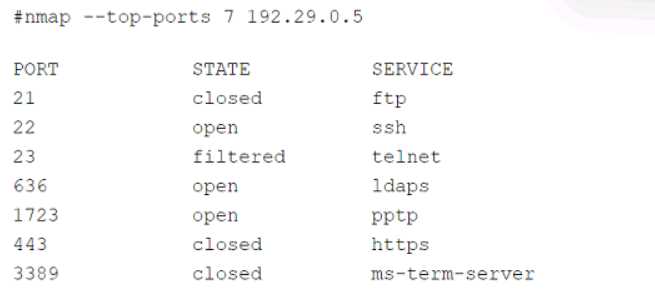 Which of the following services should the security team investigate further? (Select two).
Which of the following services should the security team investigate further? (Select two).HOTSPOT An organization has noticed large amounts of data are being sent out of its network. An analyst is identifying the cause of the data exfiltration. INSTRUCTIONS Select the command that generated the output in tabs 1 and 2. Review the output text in all tabs and identify the file responsible for the malicious behavior. If at any time you would like to bring back the initial state of the simulation, please click the Reset All button. 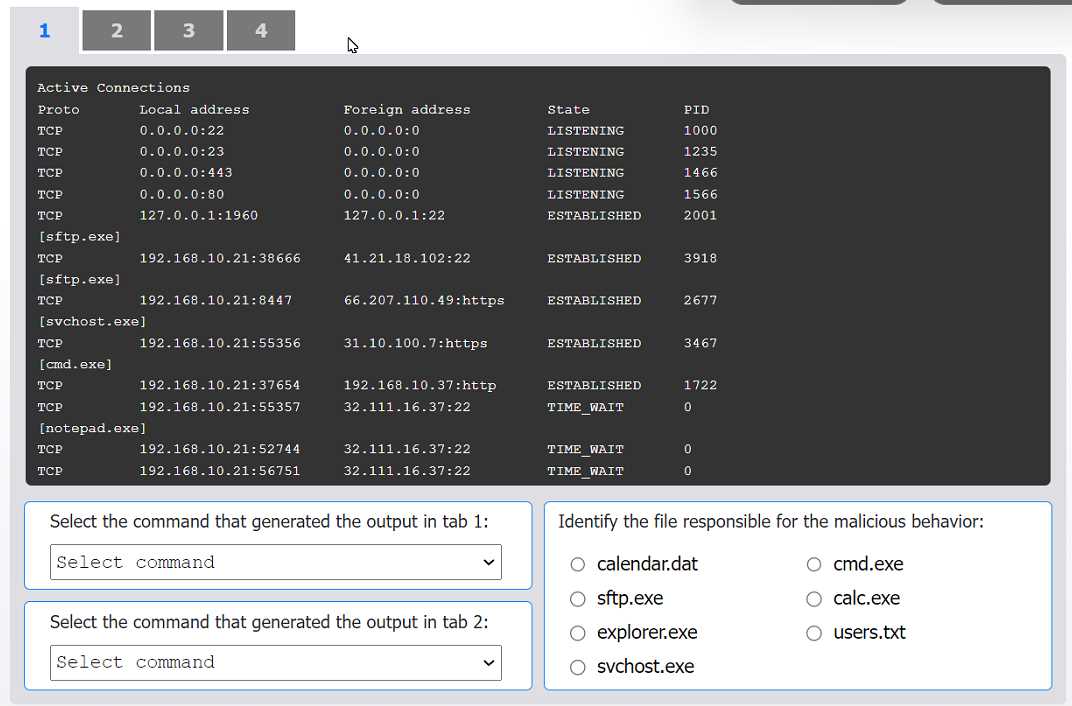
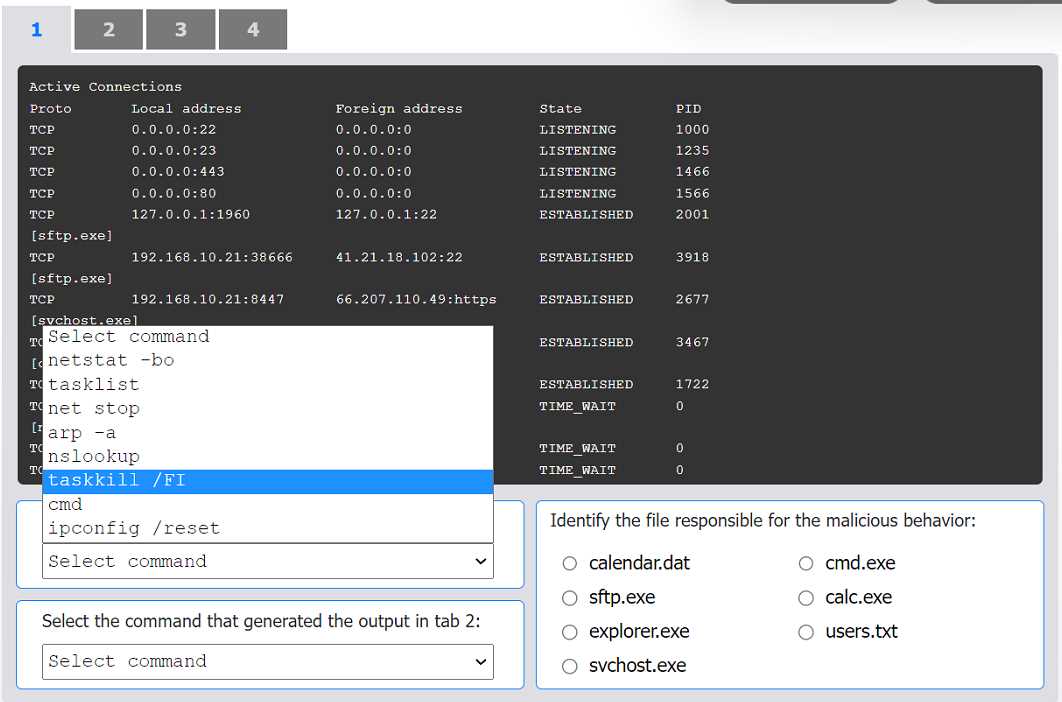
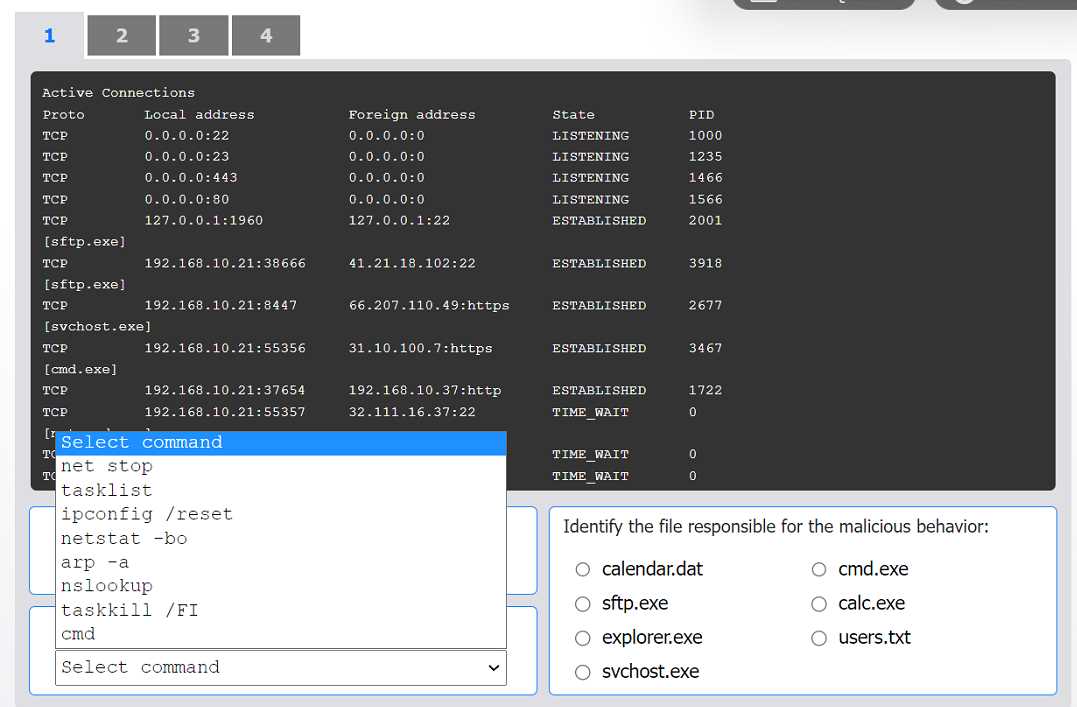
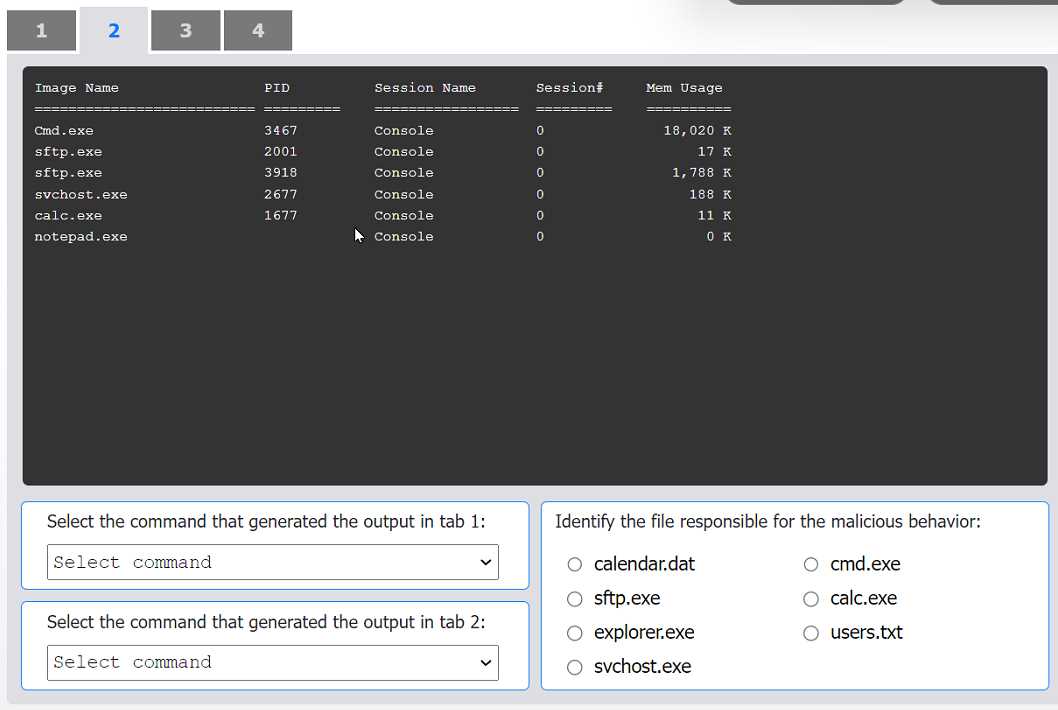
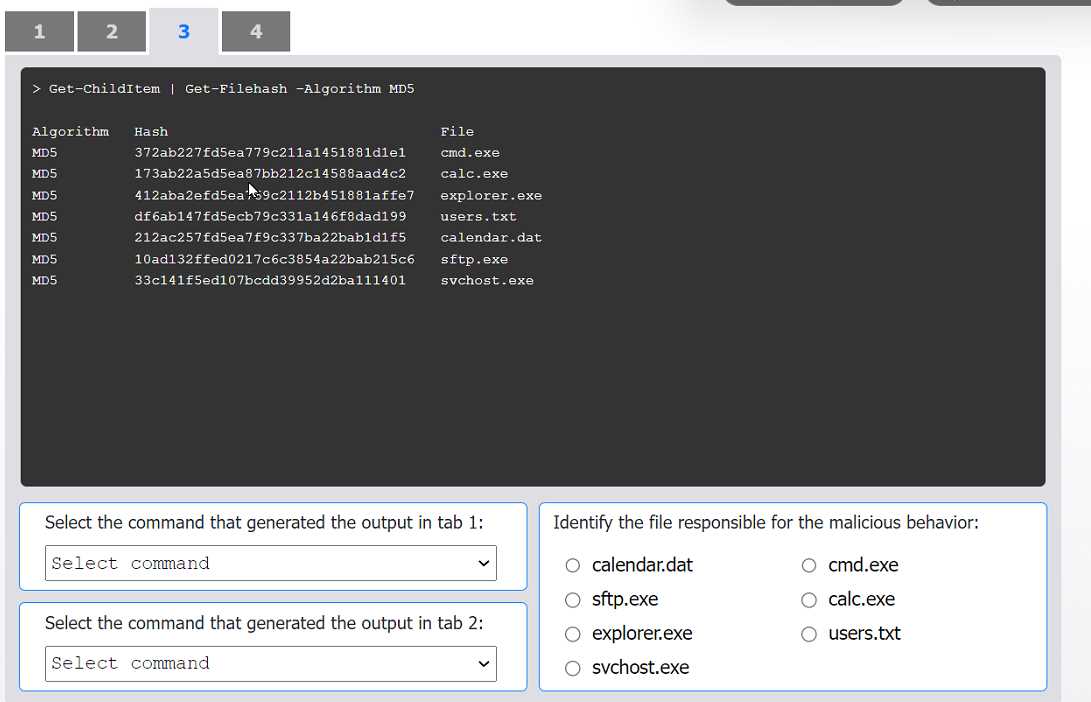
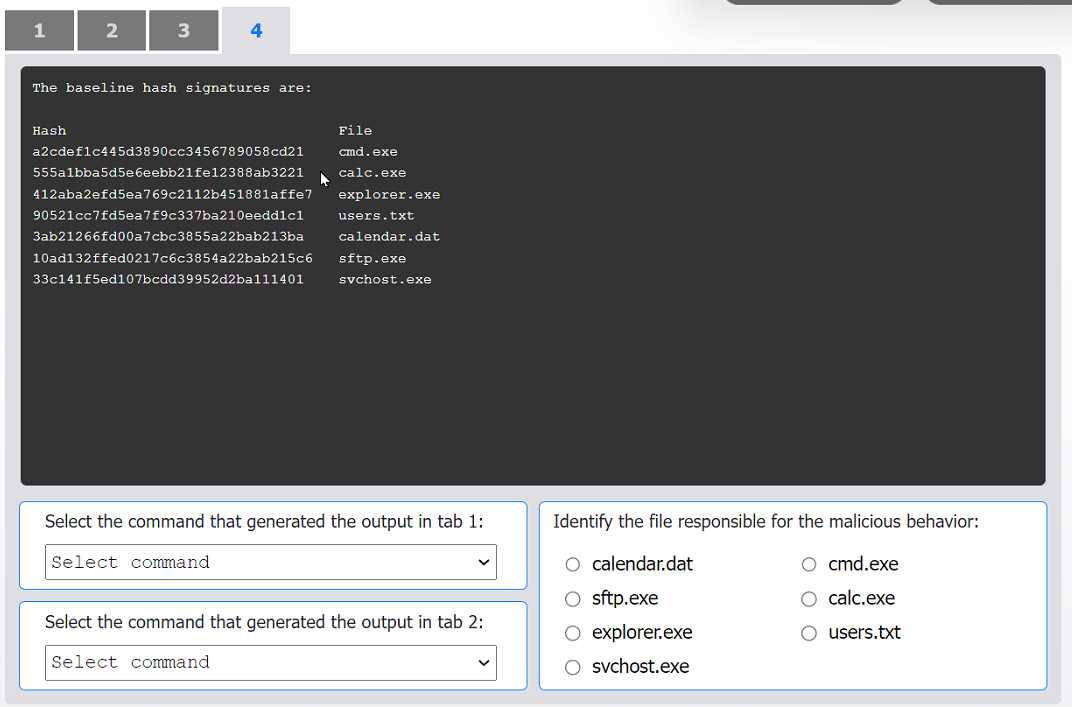
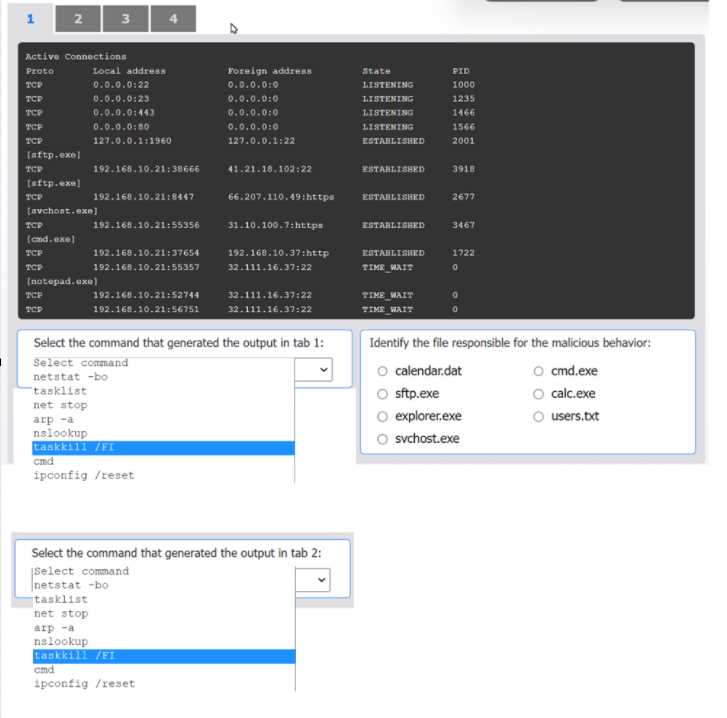
SIMULATION An organization's website was maliciously altered. INSTRUCTIONS Review information in each tab to select the source IP the analyst should be concerned about, the indicator of compromise, and the two appropriate corrective actions. 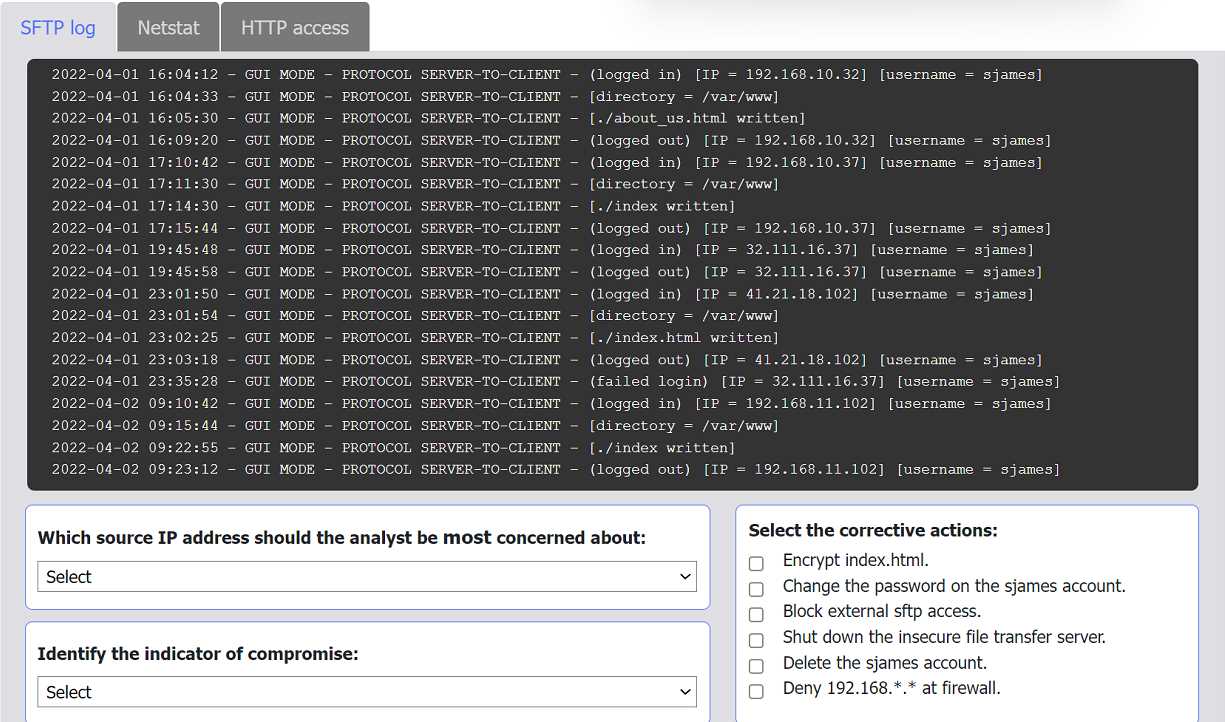
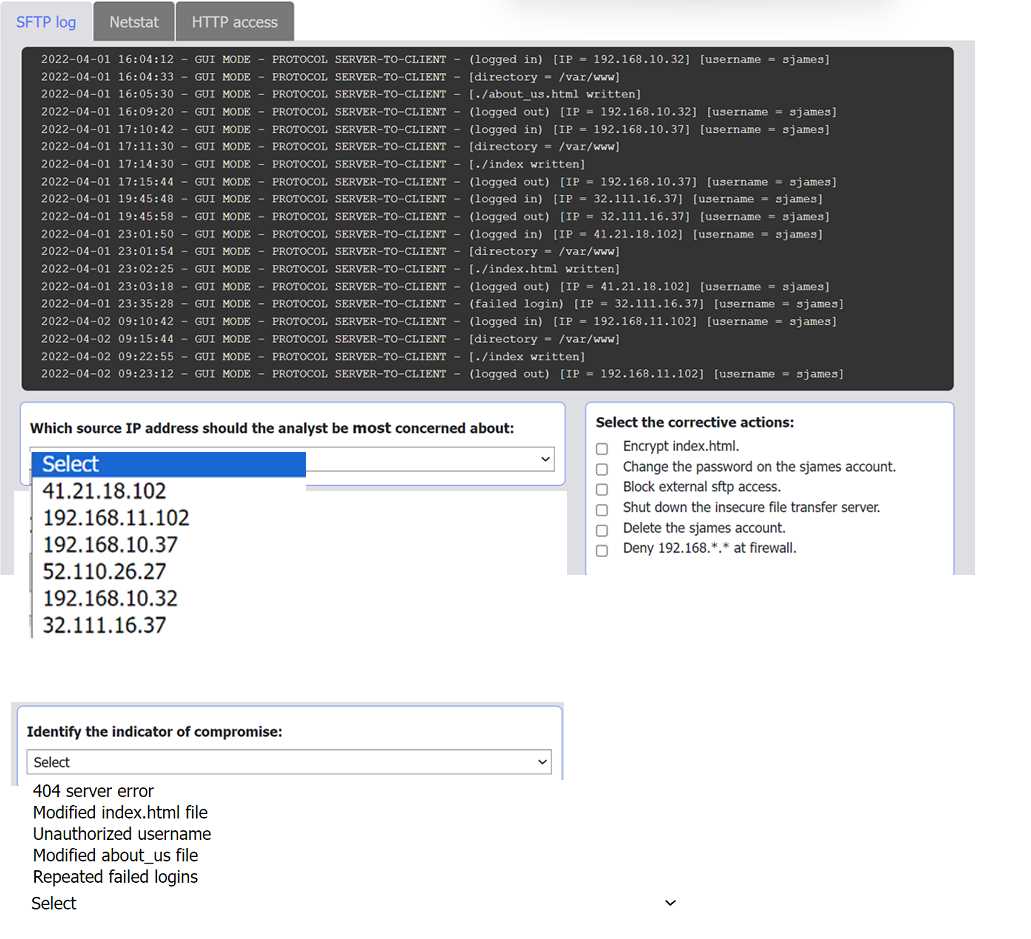
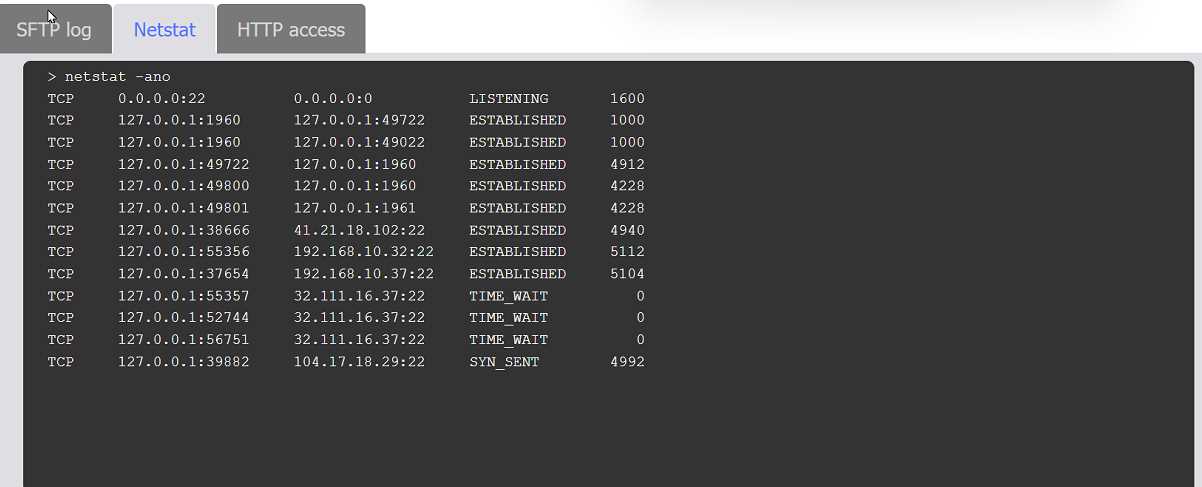

HOTSPOT A company recently experienced a security incident. The security team has determined a user clicked on a link embedded in a phishing email that was sent to the entire company. The link resulted in a malware download, which was subsequently installed and run. INSTRUCTIONS Part 1 Review the artifacts associated with the security incident. Identify the name of the malware, the malicious IP address, and the date and time when the malware executable entered the organization. Part 2 Review the kill chain items and select an appropriate control for each that would improve the security posture of the organization and would have helped to prevent this incident from occurring. Each control may only be used once, and not all controls will be used.  Firewall log:
Firewall log: 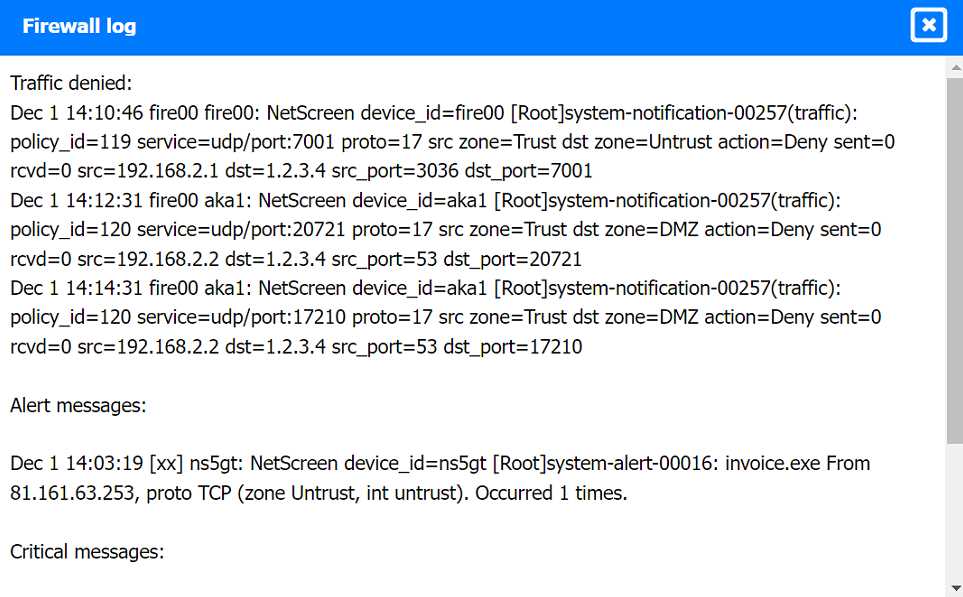
 File integrity Monitoring Report:
File integrity Monitoring Report: 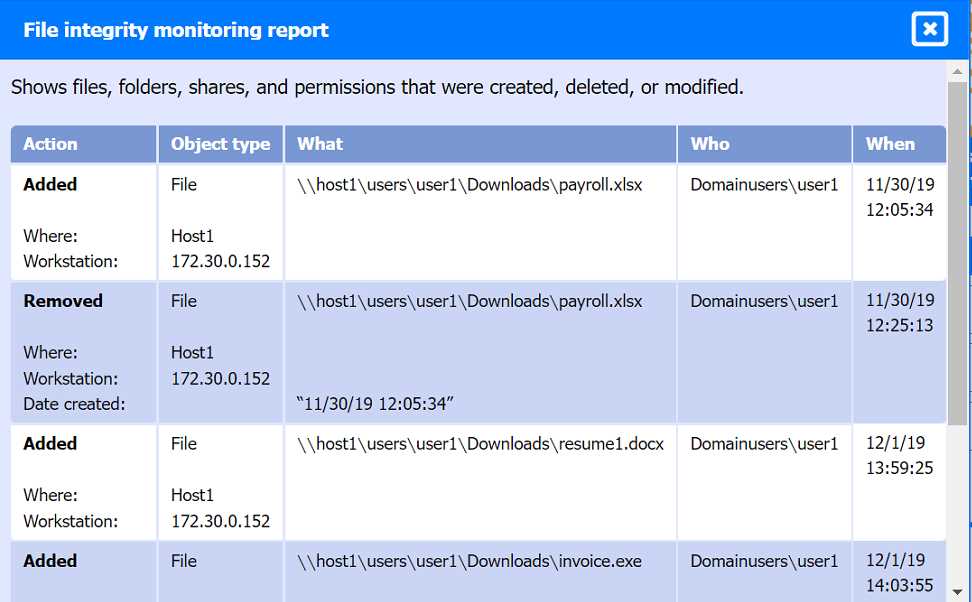
 Malware domain list:
Malware domain list: 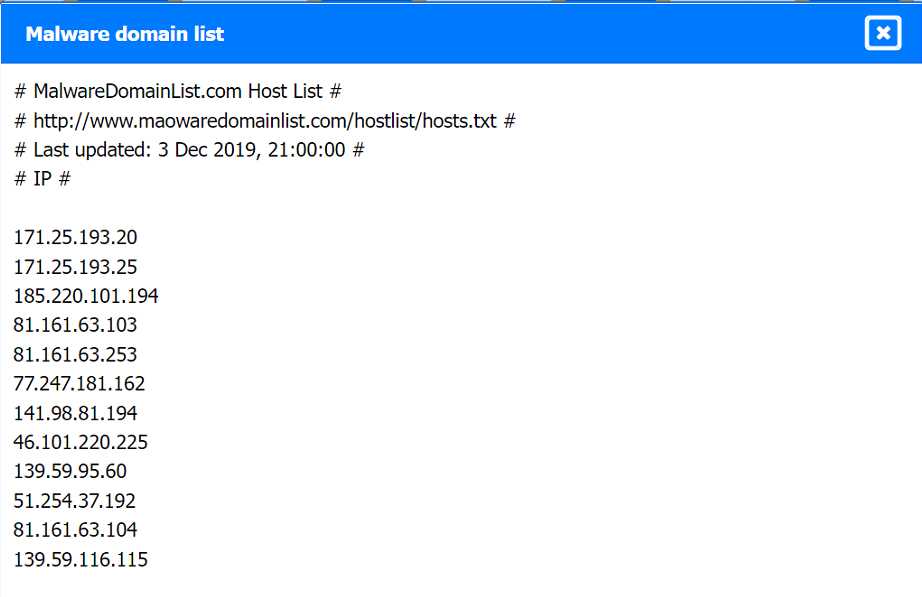 Vulnerability Scan Report:
Vulnerability Scan Report: 
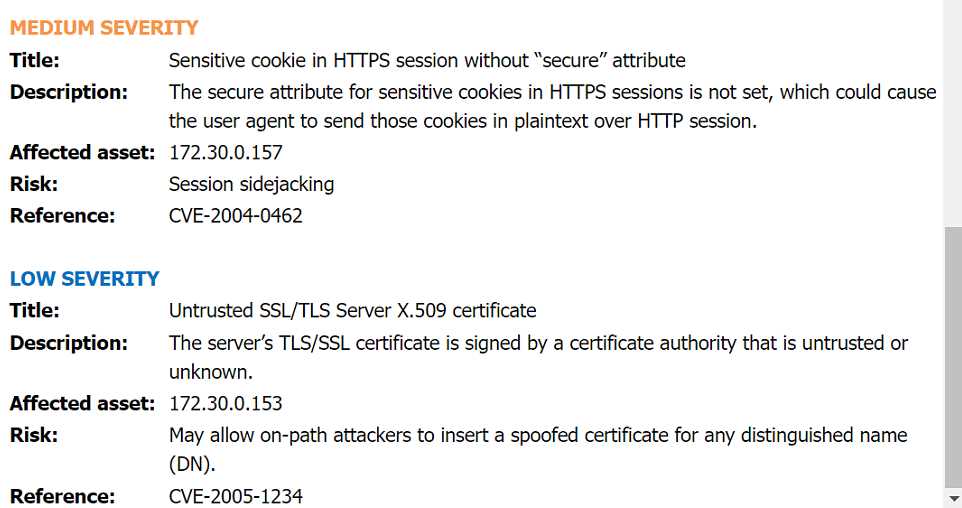 Phishing Email:
Phishing Email: 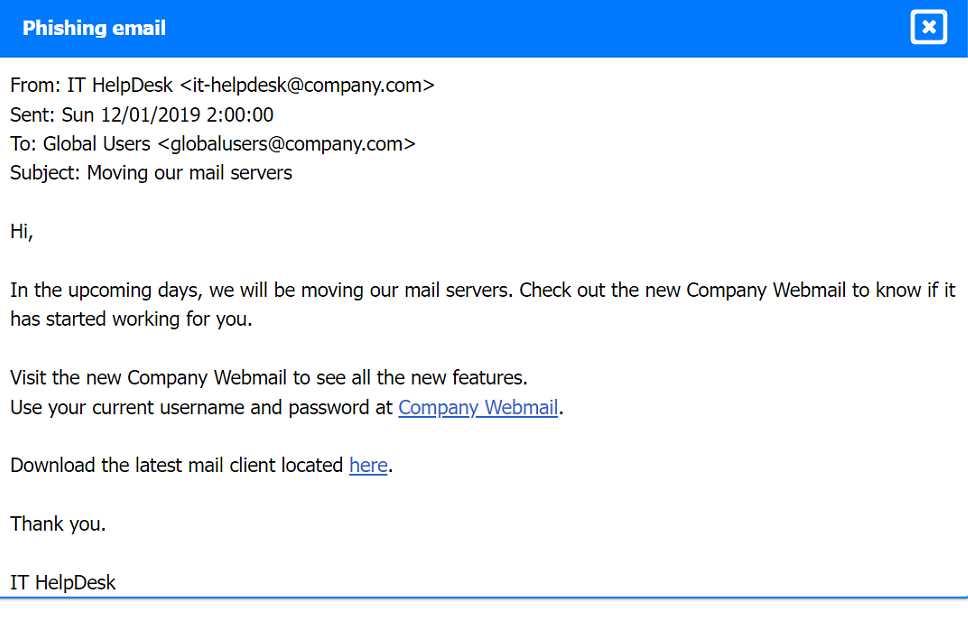
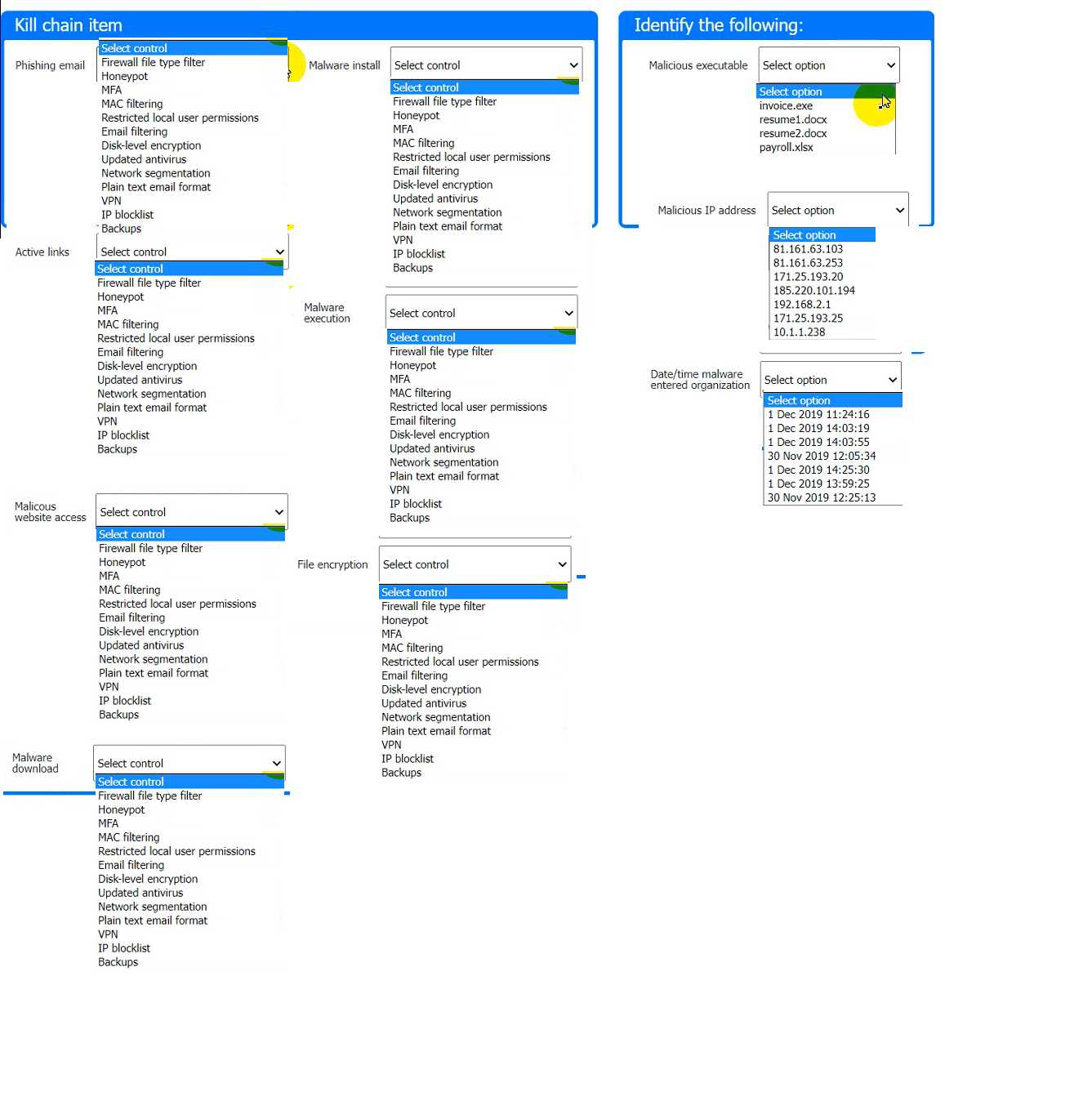
SIMULATION You are a cybersecurity analyst tasked with interpreting scan data from Company As servers You must verify the requirements are being met for all of the servers and recommend changes if you find they are not The company's hardening guidelines indicate the following • TLS 1 2 is the only version of TLS running. • Apache 2.4.18 or greater should be used. • Only default ports should be used. INSTRUCTIONS using the supplied dat a. record the status of compliance With the company’s guidelines for each server. The question contains two parts: make sure you complete Part 1 and Part 2. Make recommendations for Issues based ONLY on the hardening guidelines provided. Part 1: AppServ1: AppServ2: 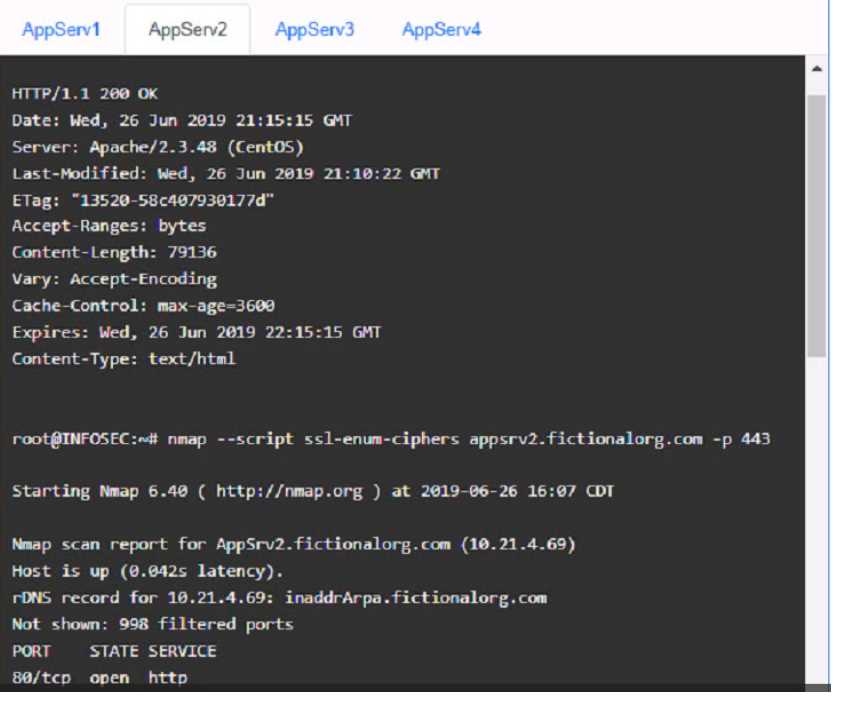 AppServ3:
AppServ3: 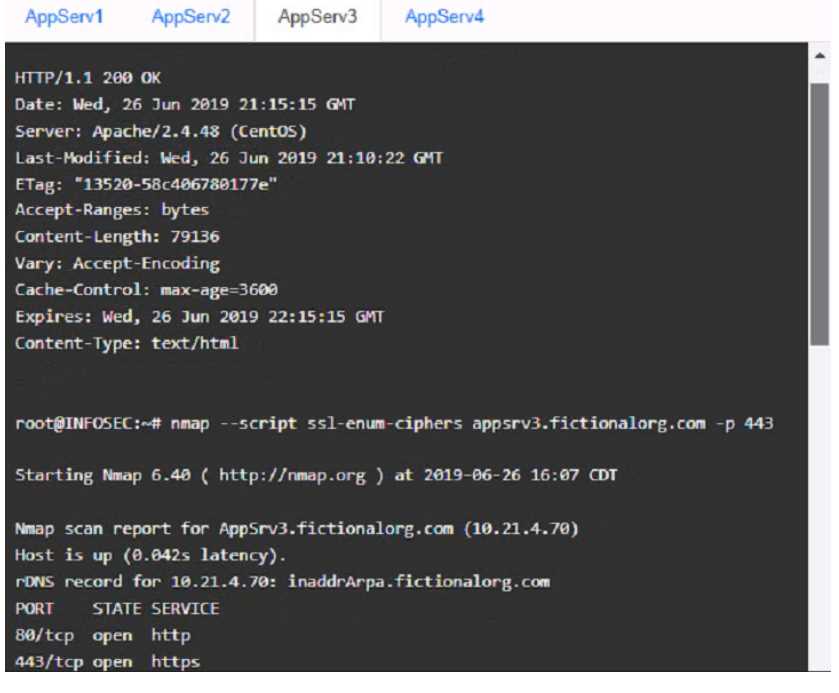 AppServ4:
AppServ4: 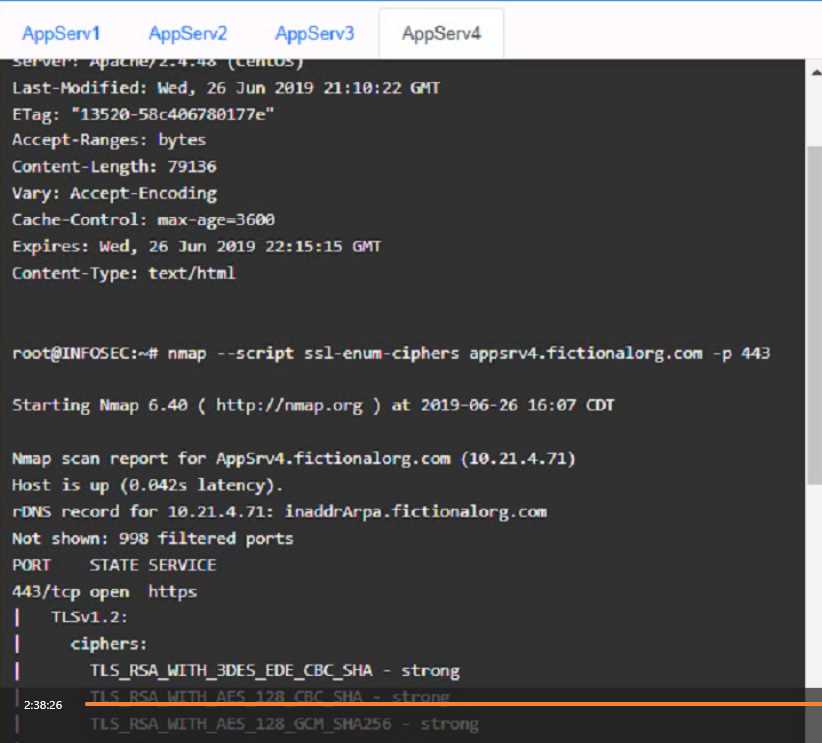 Part 2:
Part 2: 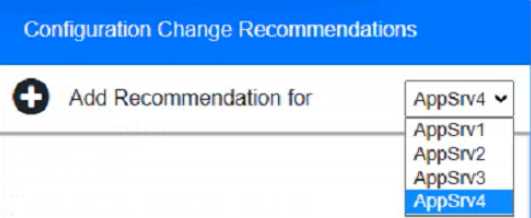
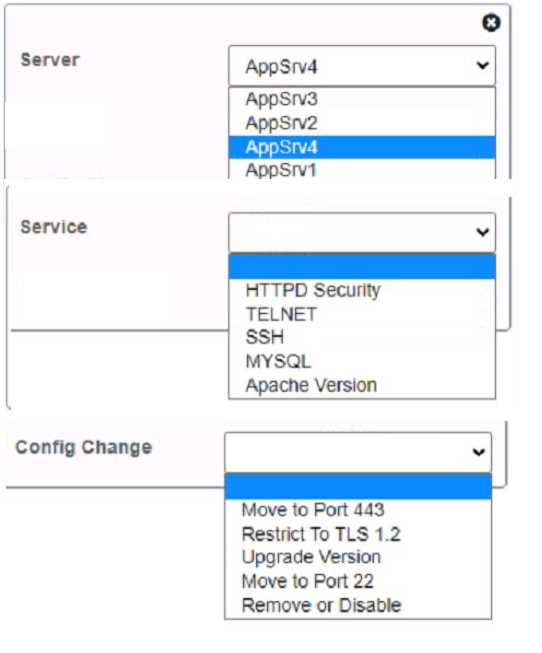
SIMULATION A systems administrator is reviewing the output of a vulnerability scan. INSTRUCTIONS Review the information in each tab. Based on the organization's environment architecture and remediation standards, select the server to be patched within 14 days and select the appropriate technique and mitigation. 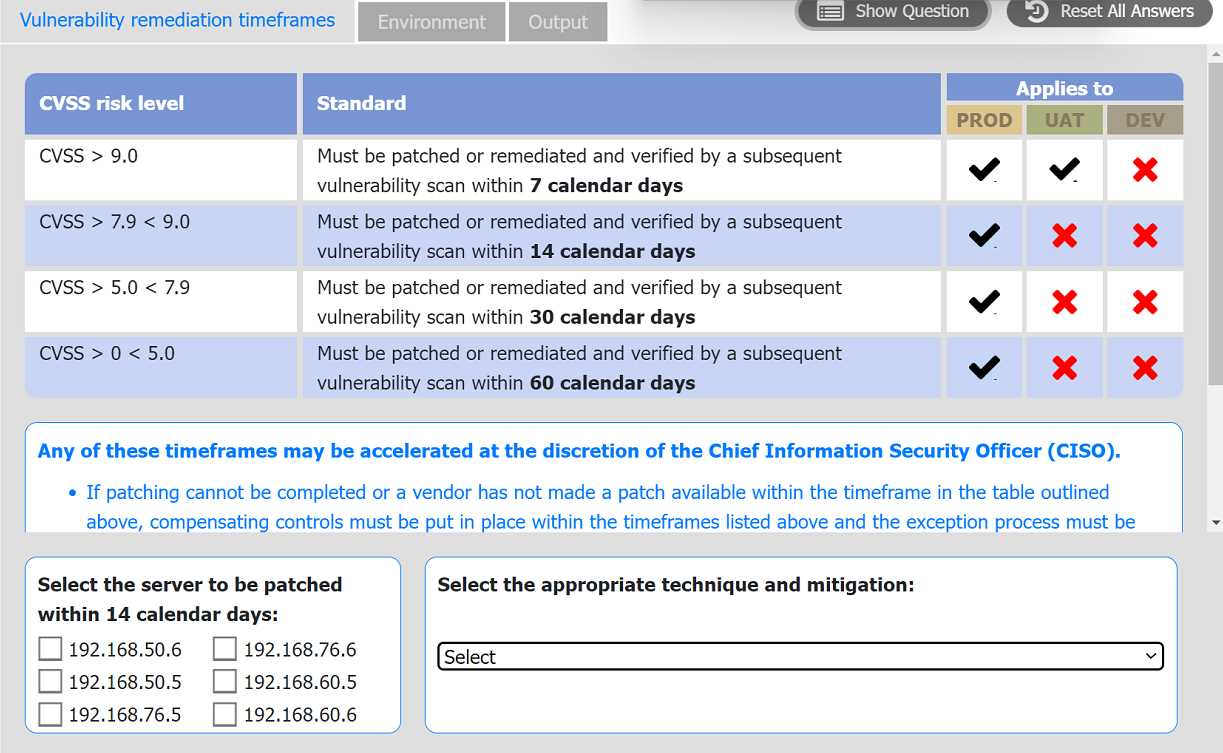
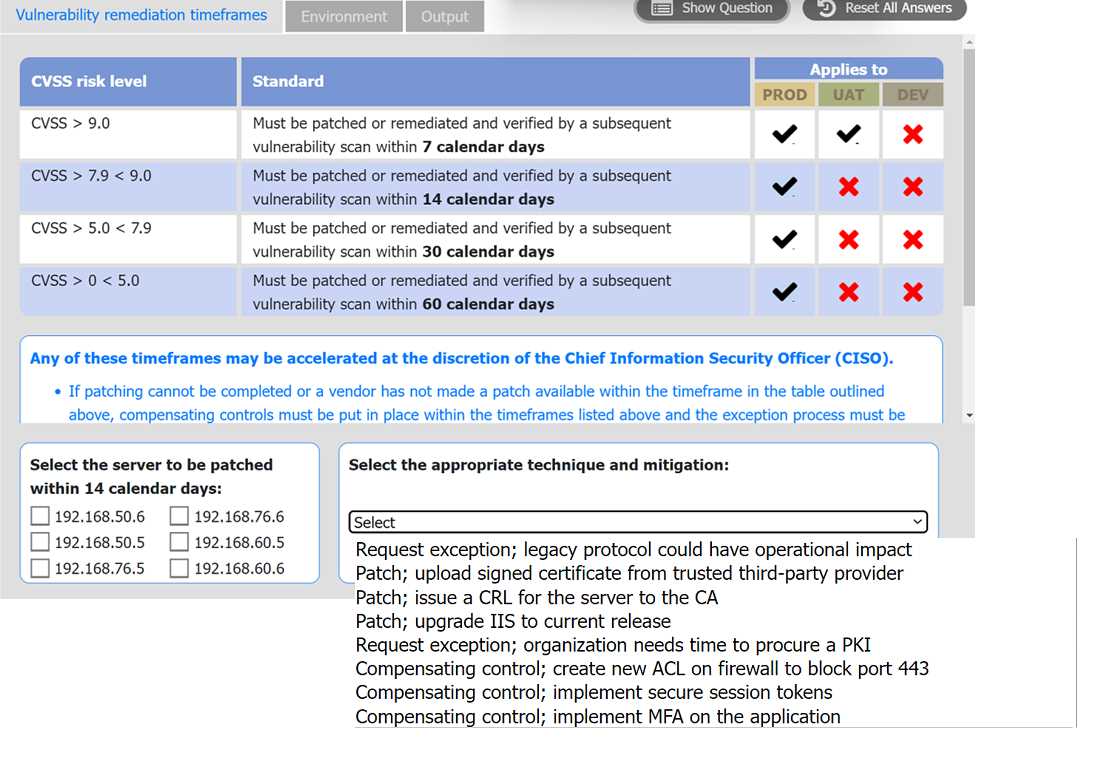
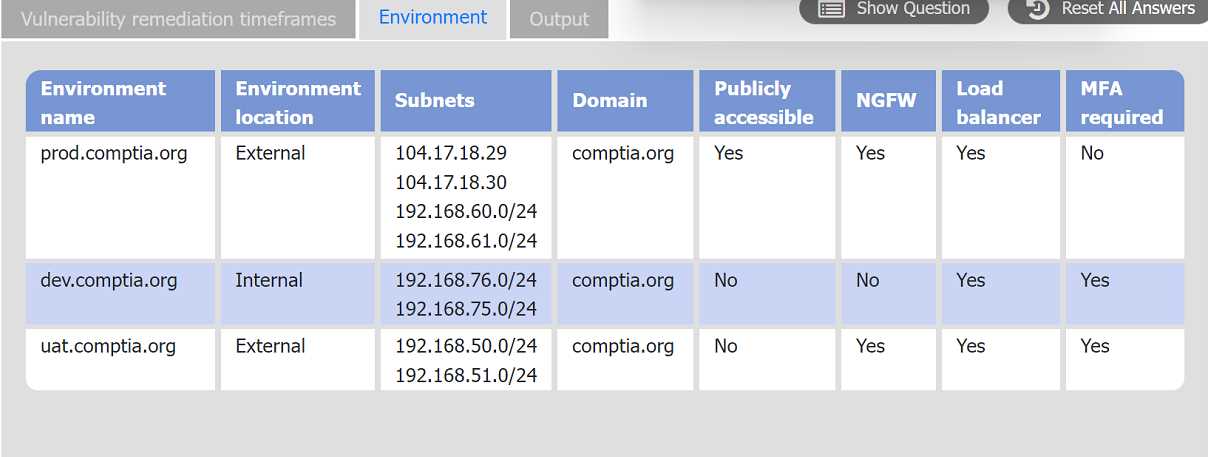
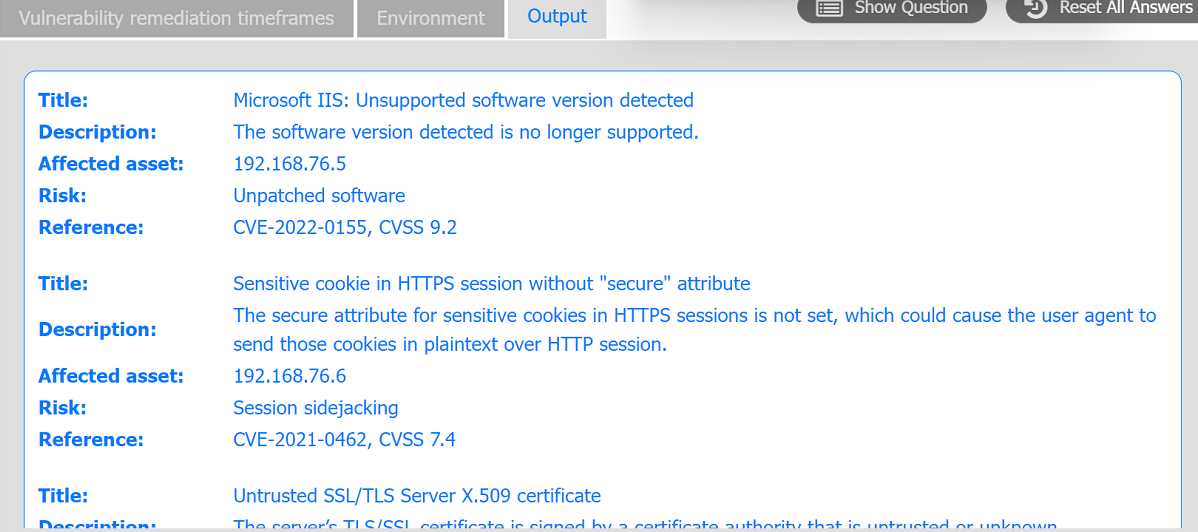
SIMULATION You are a penetration tester who is reviewing the system hardening guidelines for a company. Hardening guidelines indicate the following. There must be one primary server or service per device. Only default port should be used Non- secure protocols should be disabled. The corporate internet presence should be placed in a protected subnet Instructions : Using the available tools, discover devices on the corporate network and the services running on these devices. You must determine ip address of each device The primary server or service each device The protocols that should be disabled based on the hardening guidelines 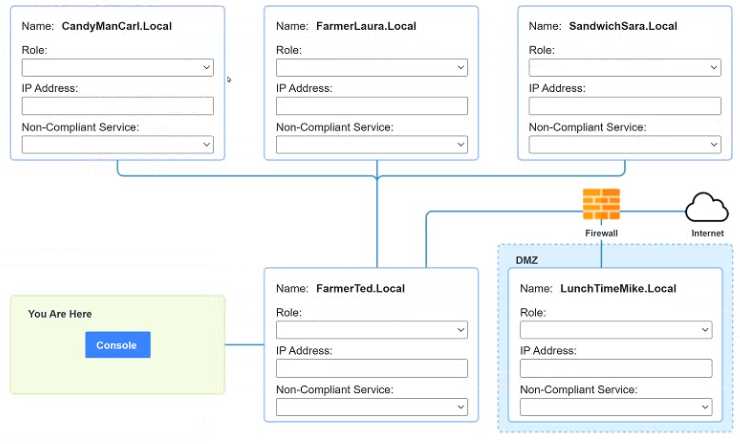
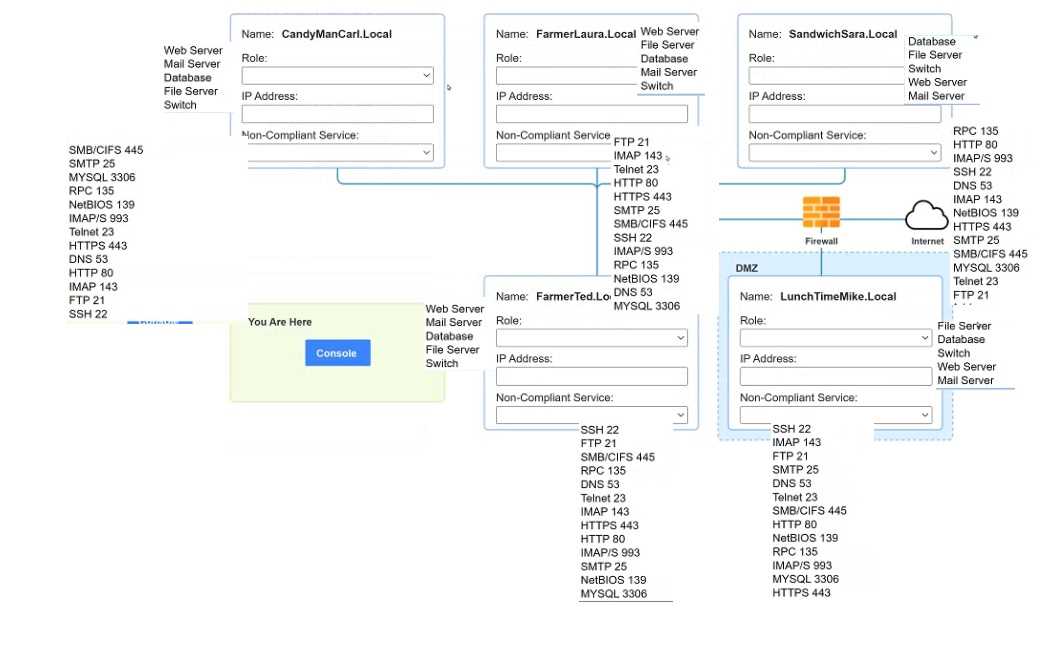
SIMULATION Approximately 100 employees at your company have received a Phishing email. AS a security analyst. you have been tasked with handling this Situation. 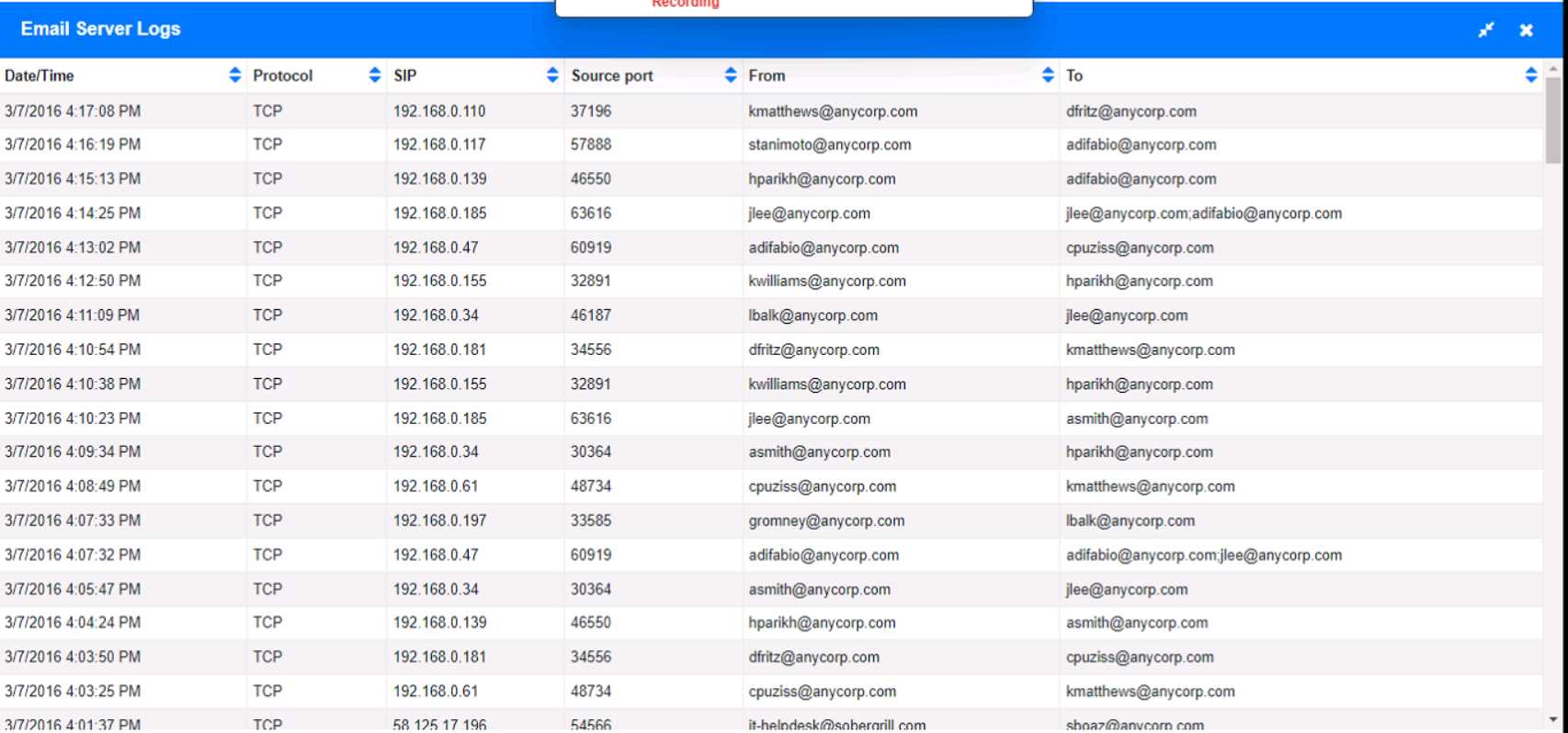
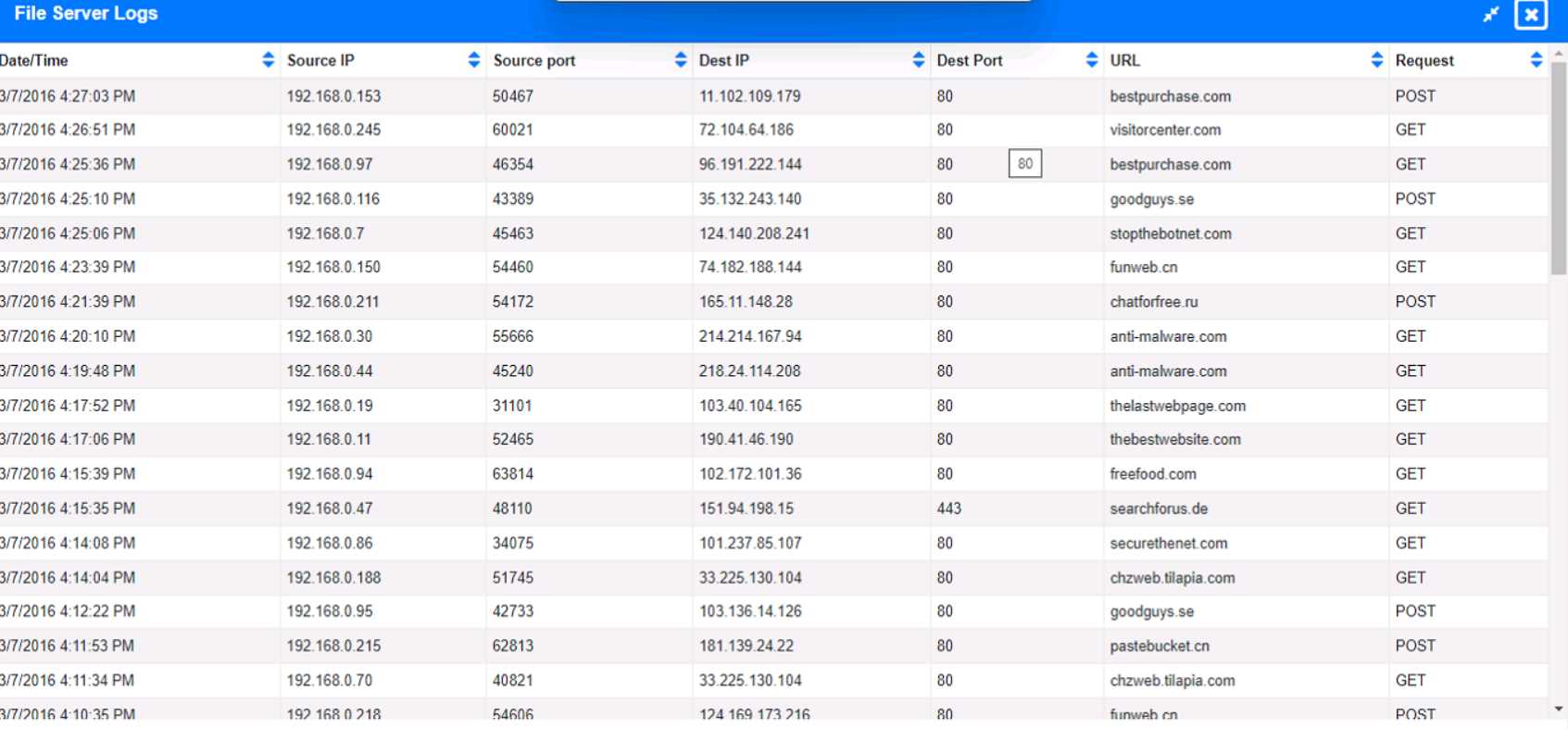
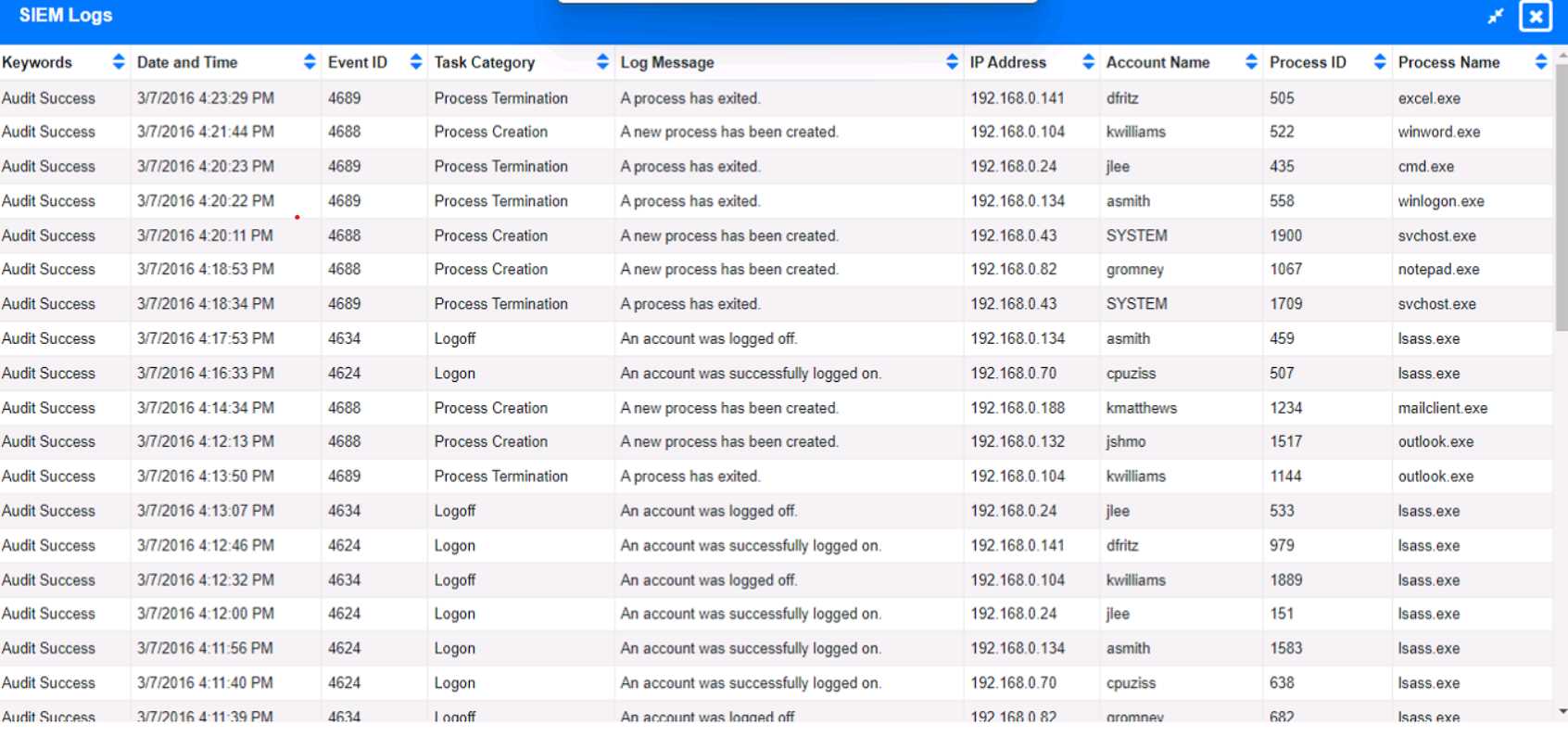 Review the information provided and determine the following: 1. HOW many employees Clicked on the link in the Phishing email? 2. on how many workstations was the malware installed? 3. what is the executable file name of the malware?
Review the information provided and determine the following: 1. HOW many employees Clicked on the link in the Phishing email? 2. on how many workstations was the malware installed? 3. what is the executable file name of the malware? 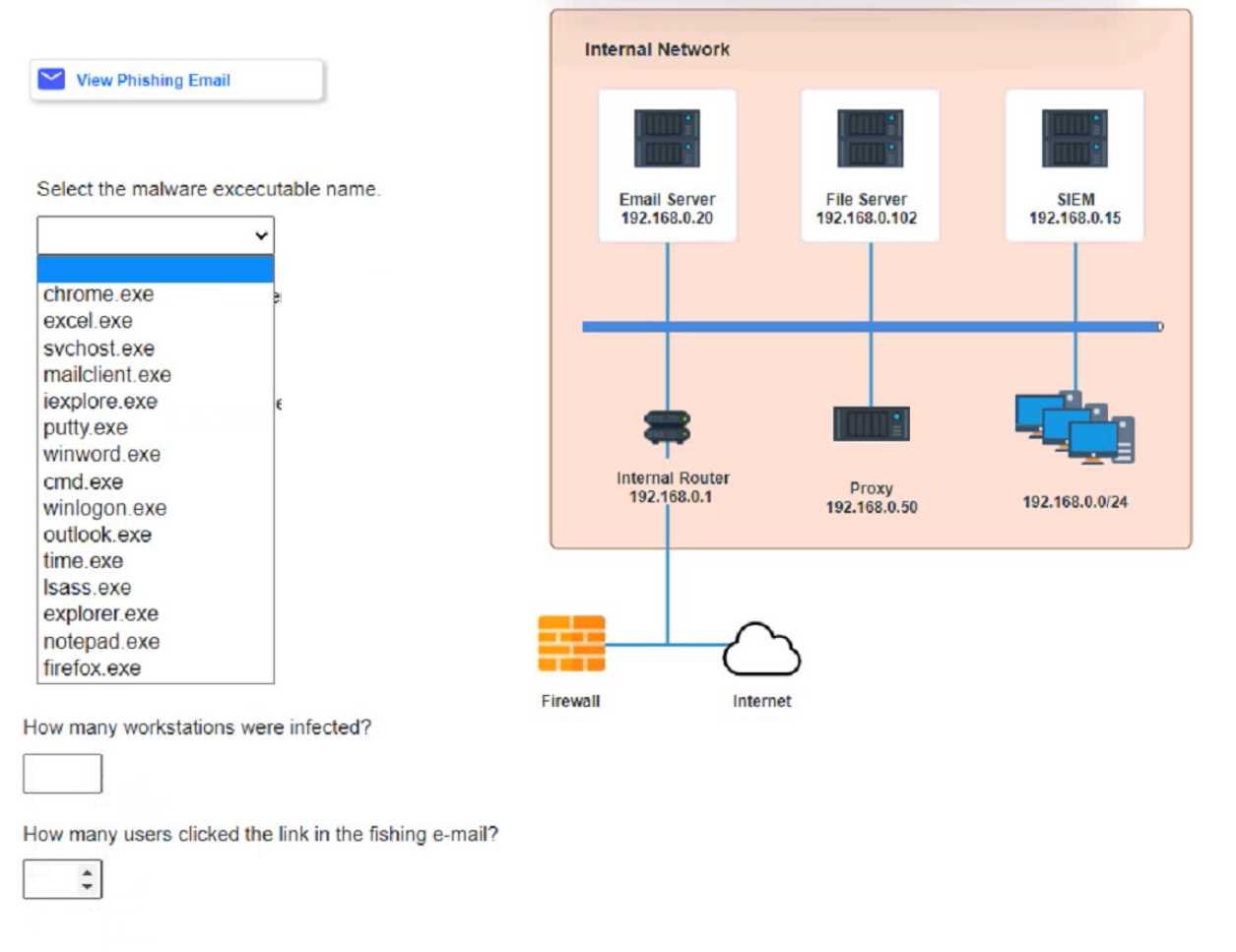
HOTSPOT The developers recently deployed new code to three web servers. A daffy automated external device scan report shows server vulnerabilities that are failure items according to PCI DSS. If the venerability is not valid, the analyst must take the proper steps to get the scan clean. If the venerability is valid, the analyst must remediate the finding. After reviewing the information provided in the network diagram, select the STEP 2 tab to complete the simulation by selecting the correct Validation Result and Remediation Action for each server listed using the drop-down options. INTRUCTIONS: The simulation includes 2 steps. Step1:Review the information provided in the network diagram and then move to the STEP 2 tab. 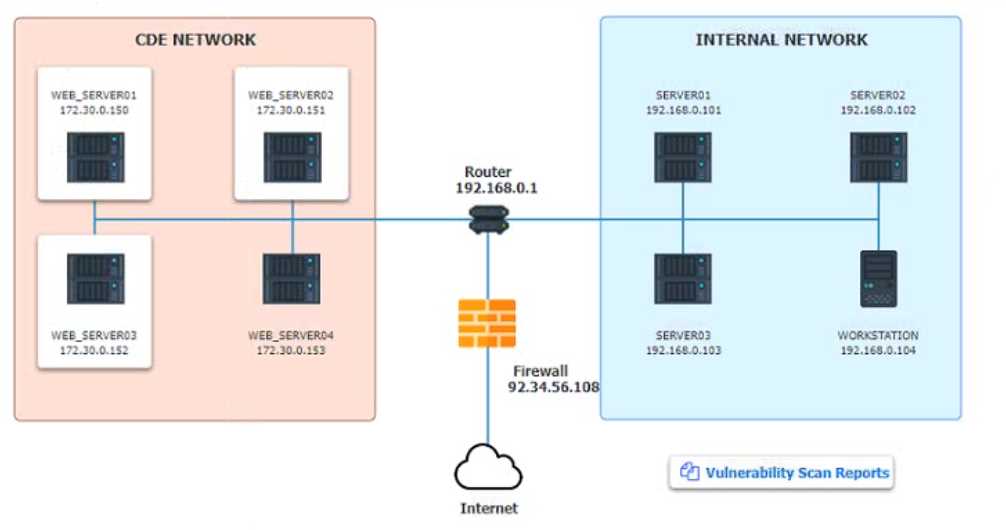
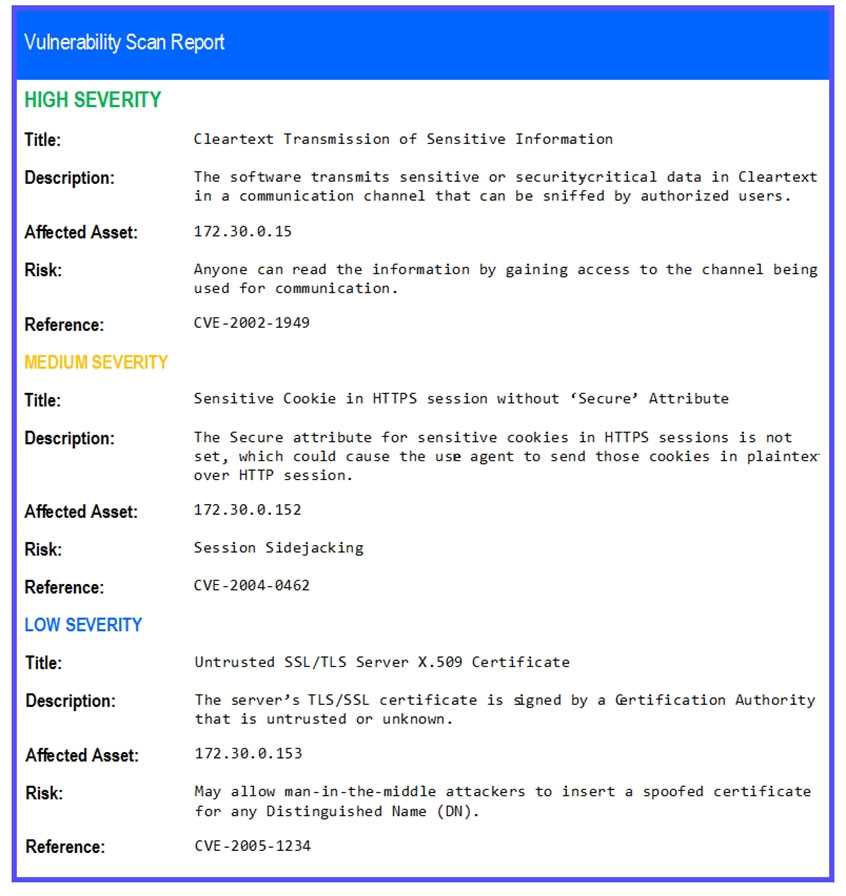 STEP 2: Given the Scenario, determine which remediation action is required to address the vulnerability.
STEP 2: Given the Scenario, determine which remediation action is required to address the vulnerability. 
SIMULATION A healthcare organization must develop an action plan based on the findings from a risk assessment. The action plan must consist of: · Risk categorization · Risk prioritization . Implementation of controls INSTRUCTIONS Click on the audit report, risk matrix, and SLA expectations documents to review their contents. On the Risk categorization tab, determine the order in which the findings must be prioritized for remediation according to the risk rating score. Then, assign a categorization to each risk. On the Controls tab, select the appropriate control(s) to implement for each risk finding. Findings may have more than one control implemented. Some controls may be used more than once or not at all. If at any time you would like to bring back the initial state of the simulation, please click the Reset All button. 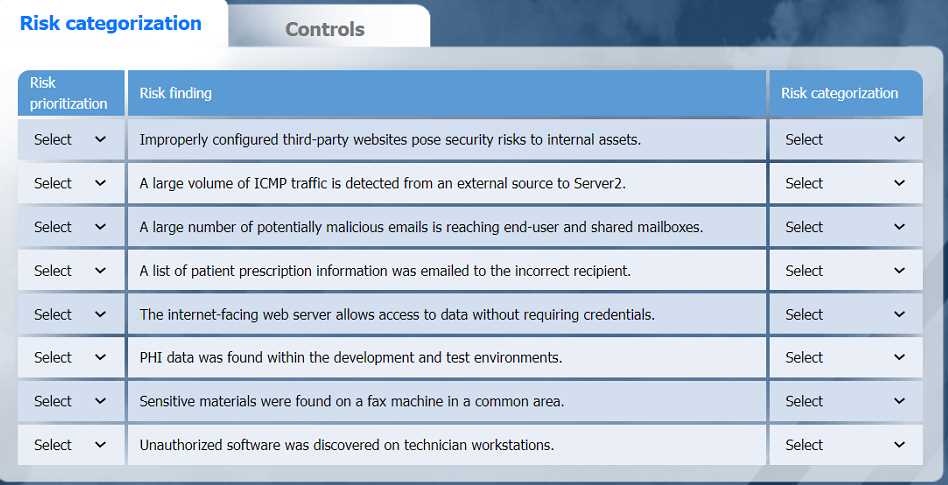


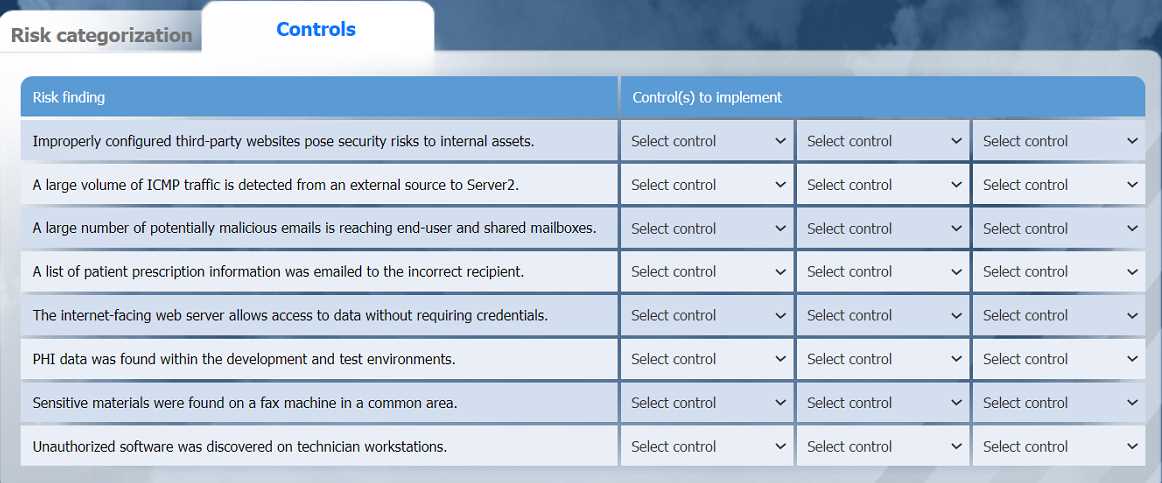

HOTSPOT
A security analyst performs various types of vulnerability scans. Review the vulnerability scan results to determine the type of scan that was executed and if a false positive occurred for each device.
Instructions:
Select the Results Generated drop-down option to determine if the results were generated from a credentialed scan, non-credentialed scan, or a compliance scan.
For ONLY the credentialed and non-credentialed scans, evaluate the results for false positives and check the findings that display false positives. NOTE: If you would like to uncheck an option that is currently selected, click on the option a second time.
Lastly, based on the vulnerability scan results, identify the type of Server by dragging the Server to the results.
The Linux Web Server, File-Print Server and Directory Server are draggable.
If at any time you would like to bring back the initial state of the simulation, please select the Reset All button. When you have completed the simulation, please select the Done button to submit. Once the simulation is submitted, please select the Next button to continue




